How Battlefield 5 fixes some of Battlefield 1's biggest mistakes
The alpha includes improvements in spotting, scoring, and vehicles.
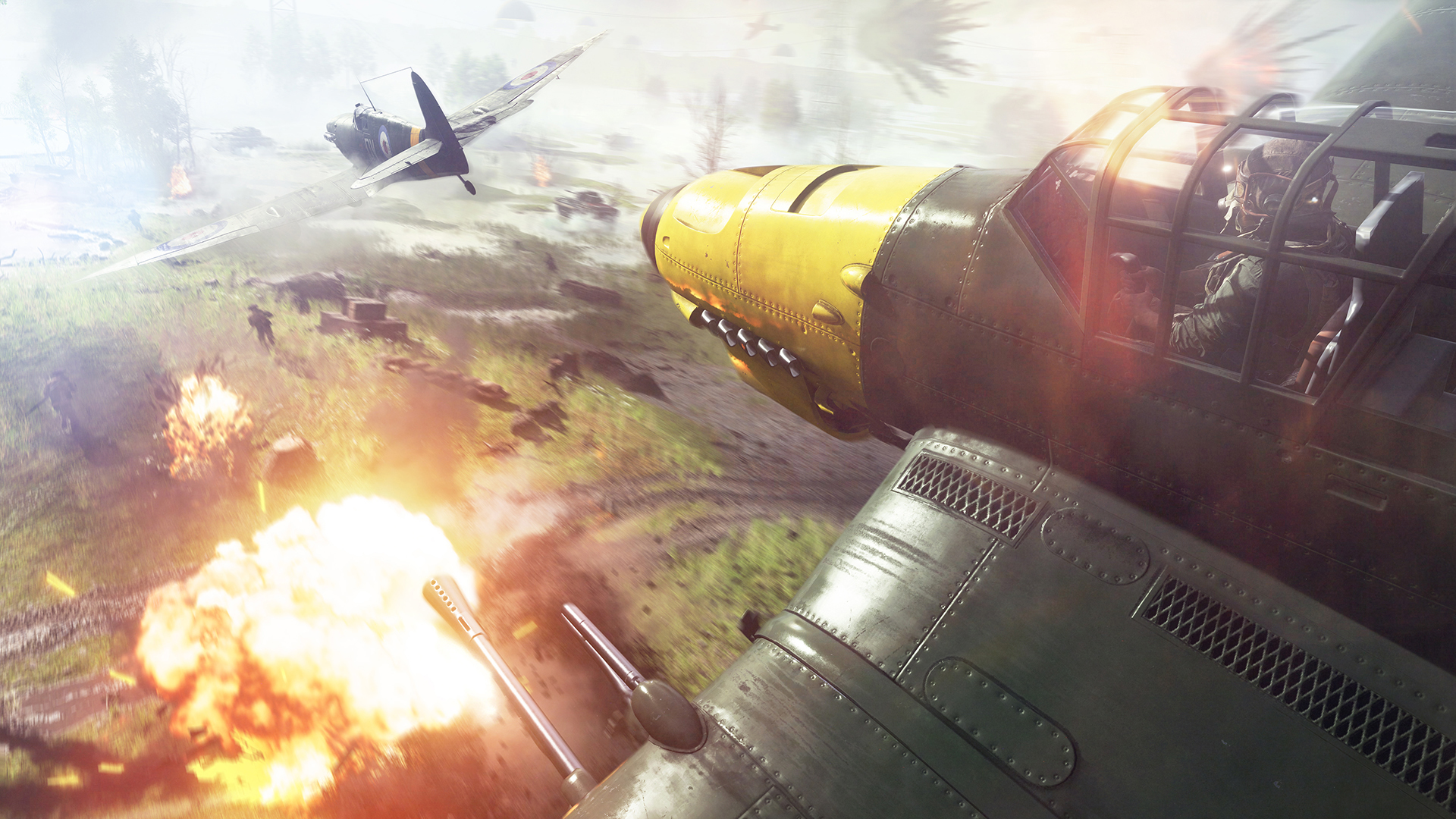
Tyler liked some of Battlefield 5's changes, but pined for the playfulness of the original, and found the new 'bleeding out' animation to be a bit much. In my experience with the closed alpha, I found the time-to-kill to be a bit low (might just be for testing) and, like Tyler, wasn't too excited about the one Conquest map. But while I agree with some of his impressions, I think it's important to note the ways in which Battlefield 5 improves on Battlefield 1—and there are a few good ones. Here's what I like so far about DICE's lesson-learning:
Spotting
The sunsetting of the Dorito hunter era couldn't be more welcome. 3D spotting—the small icon floating above an enemy's head once they're seen—condensed visual intel gathering into large swipes of the crosshairs while mashing the Q key. Far easier than reacting to sensory perception was simply scanning for and firing beneath spot markers (previously that “Dorito” shape which was replaced by BF1’s circular symbols)—especially when the latter worked around cover and through smoke grenades.
One of Battlefield 5’s biggest and most exciting changes seems quite direct in killing off its lineage icon-itis. Pressing the spot key won’t tag enemies but place a “last known” marker at your crosshairs' location, similar to the warning pings from Rainbow Six Siege. Scouts can use their binoculars to fully tag an enemy, but not through their rifle scope. (Think the Infiltrator’s Thermal Binoculars ability from Battlefront 2.) Fully suppressing an enemy will also earn a 3D icon, so Supports and their deep magazines will be valued as roving watchdogs. (Please drop more ammo boxes, Supports.) And yes, icons will disappear if an enemy breaks line of sight, almost as if (gasp) things like rocks and walls actually blocked your soldier’s eyesight.
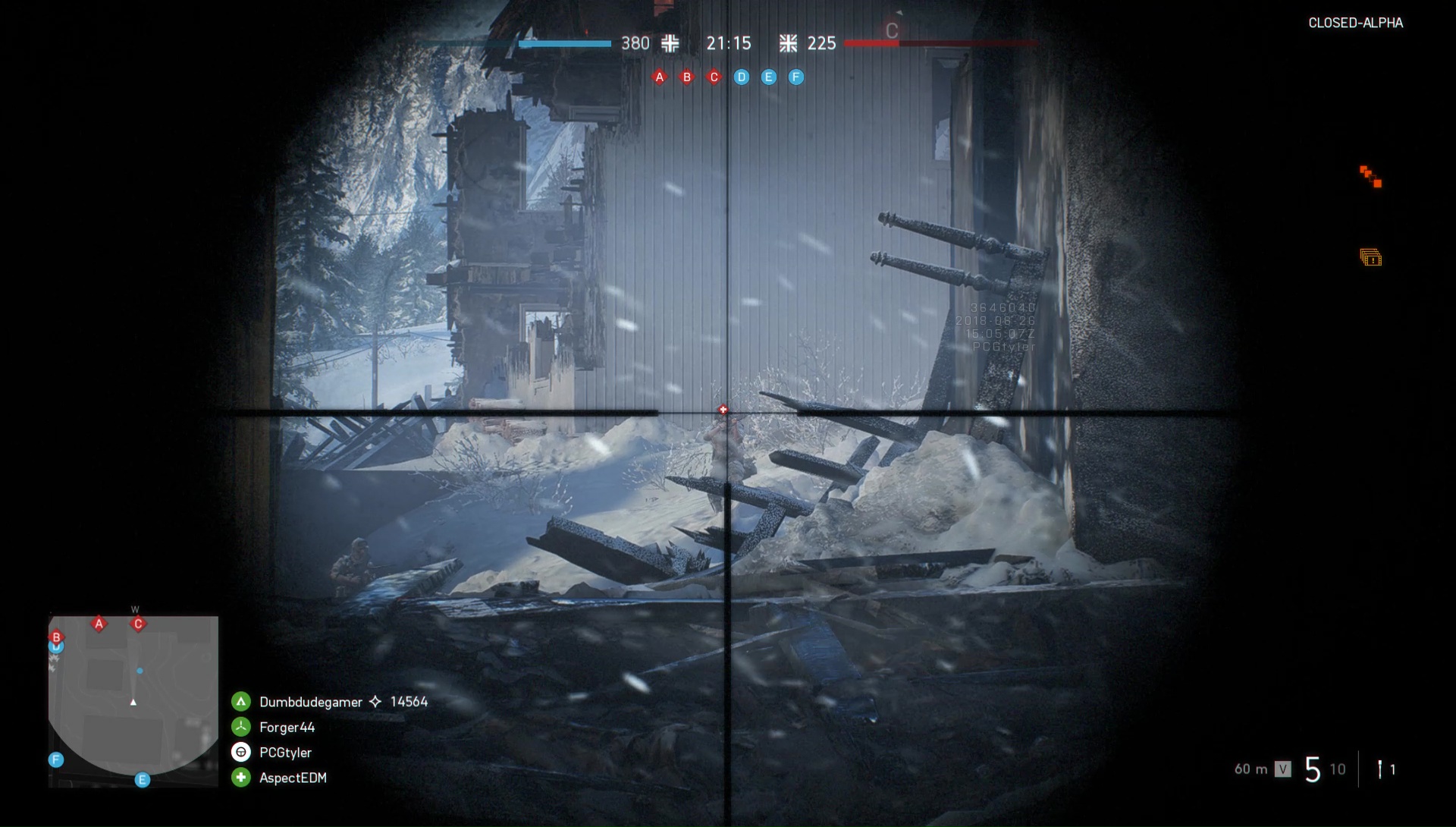
These are huge improvements. Paying attention to your surroundings now squarely relies on reading hot areas with sight, sound, and picking up visual cues such as uniform or helmet styles. Stealthy maneuvers or surprise flank attacks won’t be instantly deflated by a wall of Q-bots, and map geometry and weather effects will pull off a much better job breaking up distant shapes and profiles. Battlefield’s magic flows strongest when little disrupts the feeling of taking part in a grand war, and tiredly plinking away at floating pictures was one of the series’ biggest disruptions.
Of course, this seals the inevitability of hillside sniping returning in force as Battlefield’s most annoying tradition, especially with the Scout’s spotting flares and powerful binoculars. The new fixation on Fashionfield is another possible wrinkle: unless there’s a German-specific prosthetic arm-claw that’s just slightly more metallic than the Allied version, picking out a baddie based on what they’re wearing might not be as easy. The hope is for a good medium between expressive customization—silly Braveheart facepaint included—and unneeded clutter as possible.
Reviving
The Great Battlefield Axiom dictates that the success of overrunning an objective is proportional to the size of your team’s Medic train. The necessity of reviving fallen troopers back into the grinder has long danced the line between functional and frustrating. Clusters of Medics can hopscotch across each other’s corpses to easily outgun a defended flag, and BF1’s short-cooldown needle pokes perch Medics high atop the infantry hierarchy.
For the most part, efforts to balance revives have avoided treading too heavily on the Medic’s steep benefits. In BF1, a few seconds of buffer separate each syringe charge, and a downed player can be recovered only a few times within a short time period—a well-needed adjustment following the hilarious dark days of BF3’s infinite revives. It’s likely BF5 will start off with these tweaks, stopping short of anything more heavy-handed such as BF4’s paddle-charging mechanic.
The biggest gaming news, reviews and hardware deals
Keep up to date with the most important stories and the best deals, as picked by the PC Gamer team.
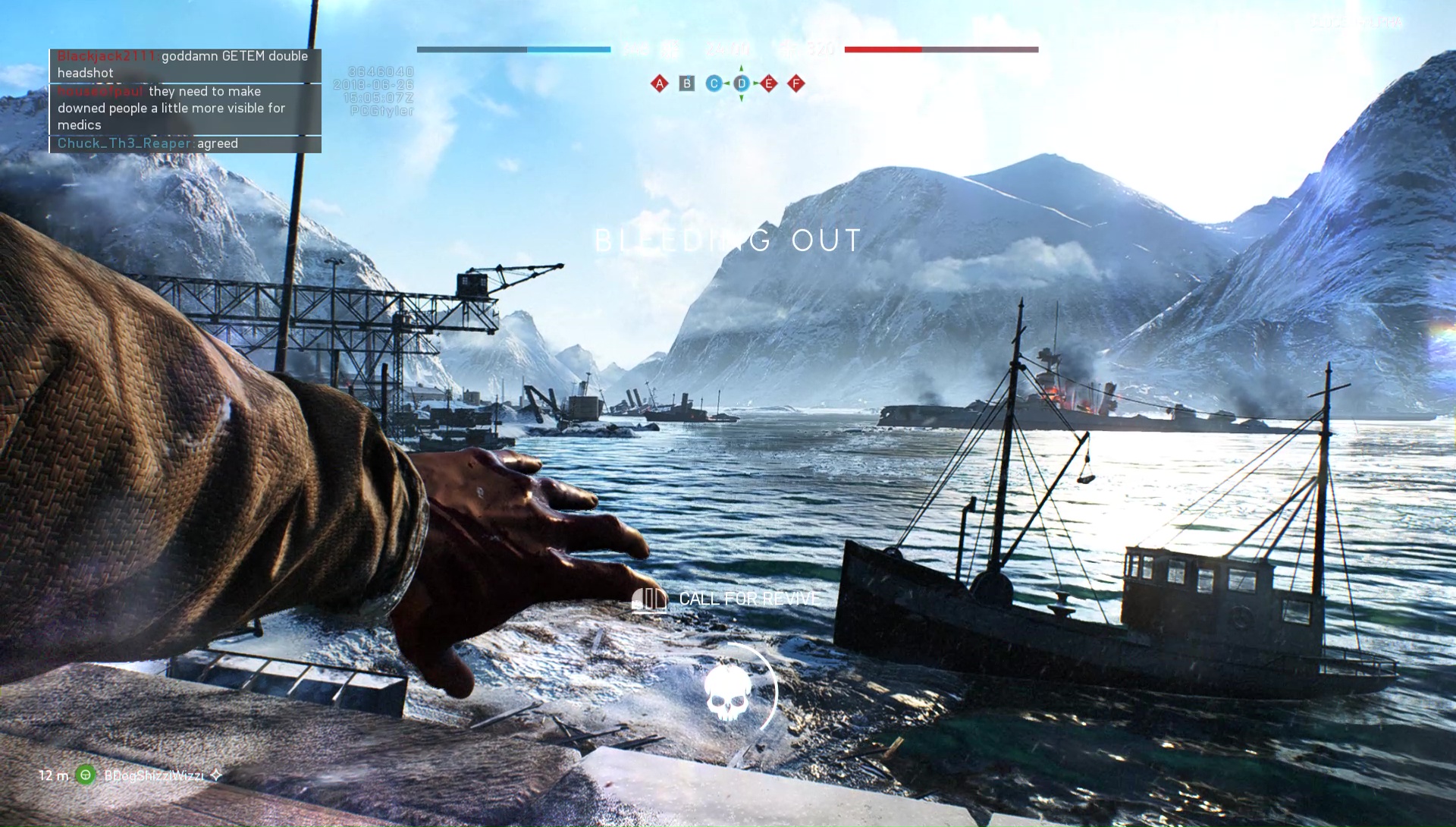
Instead, you’ll have to go through a set animation to pull off the revive rather than stabbing the air above someone like a Harry Potter spell. (You can fully look around while reviving, and you can stop the animation at any time if danger appears, though that didn’t seem implemented yet in the alpha.) On the surface, this feels like a stronger reason to carefully decide who you can safely revive instead of power-sliding for the first dead person you see. Tying the Medic’s most important function to an animation could feel restrictive—the absence of control is risky in shooters—but it also heightens the importance of choosing the right moment to stow your gun and pull out your needle.
Will this kill off revive trains entirely? Probably not, but the vulnerability window when a Medic steps in to save a soul will definitely be wider, and chain revives will need more time and effort beyond spam injecting a bunch of bodies. A possible wildcard to consider is the frequency of soldiers escaping the grave via squadmates helping each other up, as the non-Medic revive animation is significantly longer and returns a smaller portion of health.
Conquest scoring
BF1 gets a pat on the head for paying the same amount of attention to the staple Conquest territory control mode as to its glitzy Operations mode. Where that pat turns into a slap is the harrowing decision to tinker with ticket counts in a boldly faulty effort to direct more fights atop flags. Ultimately, the changes in BF1 turned matches into incredibly lopsided stomps most of the time.
Essentially, any captured territory contributed to your team’s score, creeping steadily higher over time until reaching a victory number. Even if you held onto one or two flags, points would still flow in, and managing tickets—killing enemies, respawns, and reviving allies—stepped back in favor of bouncing between flags to rack up points as fast as possible. In practice, whoever picked up steam first was often guaranteed a win, as the opposition simply couldn’t make up enough lost ground with kills or by desperately trying to regain objectives.
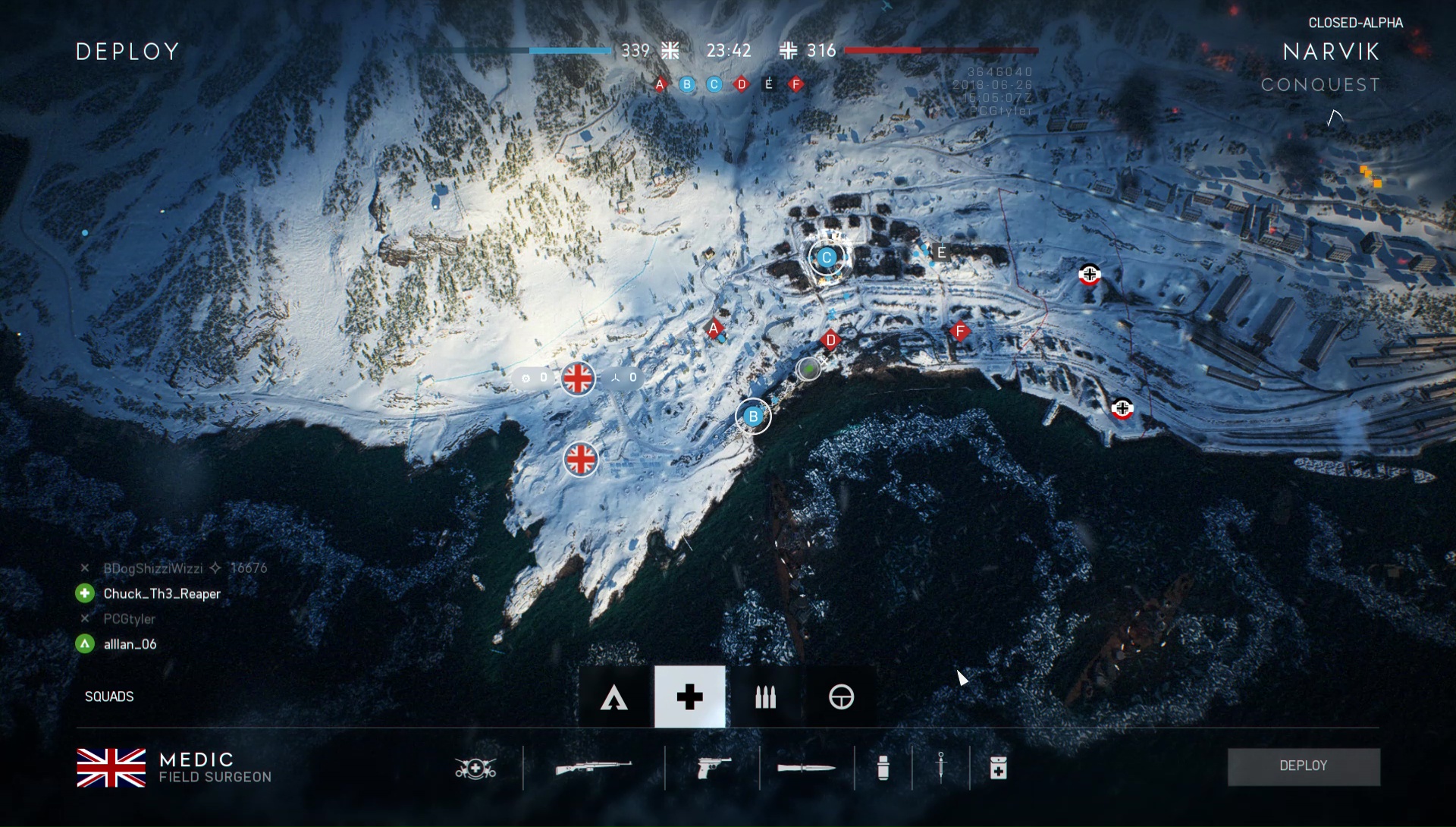
Contrast that to how Conquest used to work and how it works once more in BF5: a starting allotment of tickets, a 1:1 value on kills, revives, or respawns, and a bleed effect for the losing team only when the other team holds a majority of objectives (at least as far as we can tell so far). Heroic moments and comeback upsets borne of making your last few tickets count always deliver far better thrills than passively watching a flag travel up a pole in the middle of a soldier deathball. Sure, nothing still stands in the way of ever-present team stacking issues—fingers crossed for proper server balancing at launch—but the choice between which method rewards effort is clear.
Vehicles
Behemoths begone. DICE confirmed the removal of the jumbo-sized vehicles during E3, opting for a wider spread of standard tanks and transports alongside specialized versions called in by squad leaders. That’s a telling shift from BF1’s thematic lean on war blimps and mega-trains, and it returns vehicles to their classic role as costly force multipliers. Doubly so for their new capability to tow emplacements, as airplanes and fortifications now must beware of rolling artillery cannons and flak fire.
Behemoths were a spectacle to gawk at during BF1’s early days, but further into its lifespan, their theatrical luster couldn’t hide their lingering problems. Their multiple seats and gunner slots took chunks of soldiers away from objective combat to spam long-range fire halfway across the map. Driving a behemoth was a thankless job riddled with hurled insults in chat if you even strayed an inch too close out of gunner alignment. Savvy pilots or demolitionists could anticipate where the behemoth would spawn on the map and savage its health as it slowly trundled into the map.
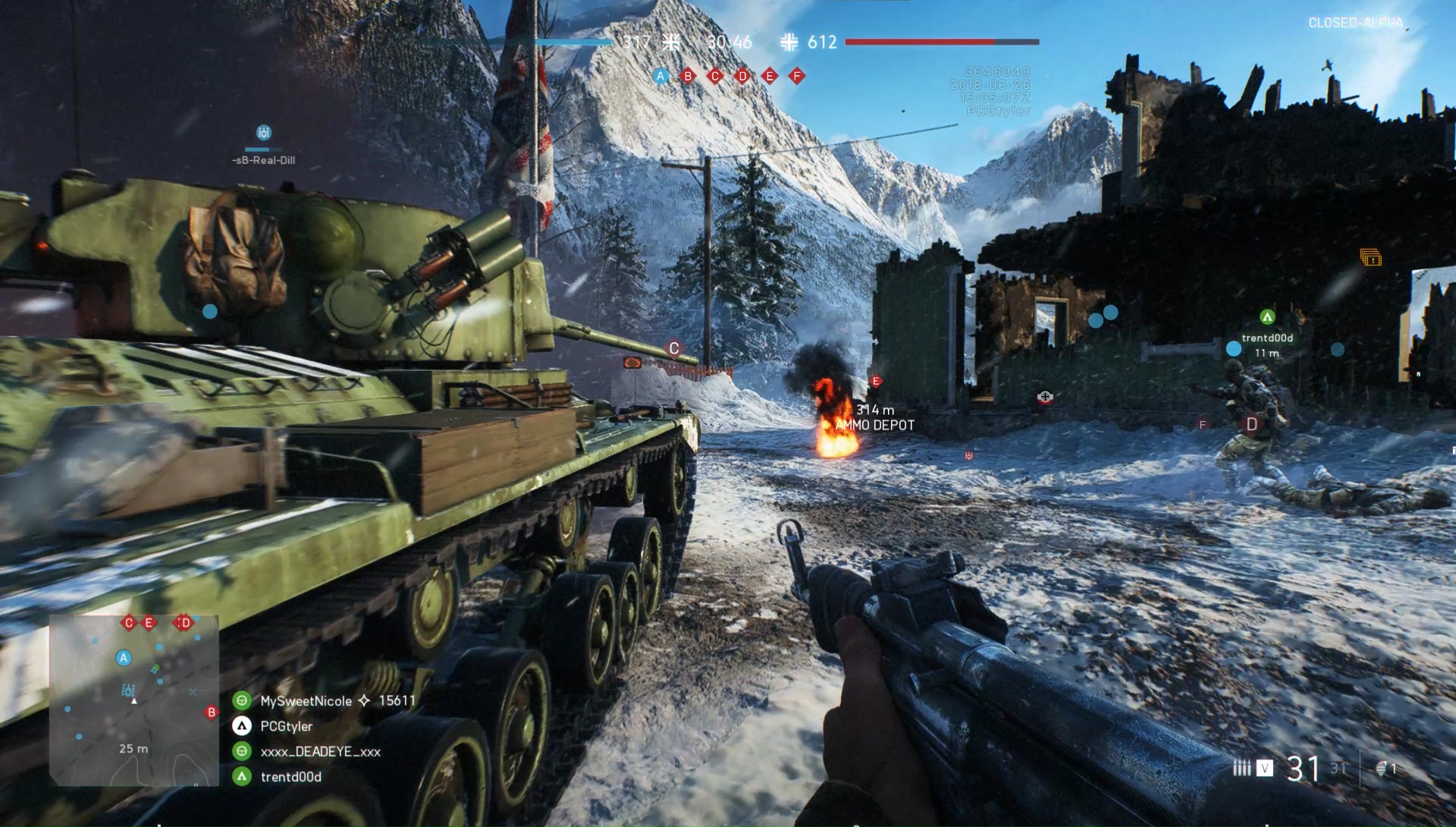
With behemoths gone, the infantry-armor relationship turns back to the tanks, planes, and transports that can more easily bring a strong presence directly onto an objective. The return of rocket launchers will be handy in applying punishment to aggressive drivers, but the scarcity of armor on either team (the respawn timer for vehicles is quite long, at least in the alpha) makes timid tankers who play peekaboo with hilltops and ridges even more aggravating to deal with. BF5’s vehicles feel more close to the Battlefield ideal: a formidable obstacle to overcome with teamwork instead of an oversized gnat to swat away with minimal struggle.
Omri Petitte is a former PC Gamer associate editor and long-time freelance writer covering news and reviews. If you spot his name, it probably means you're reading about some kind of first-person shooter. Why yes, he would like to talk to you about Battlefield. Do you have a few days?


